Upon entering the building, the crossing of the modules creates a large hall intended as a kind of marketplace for the exchange of ideas. The upper floors contain rooms that can be used flexibly for concentrated work or group work.
In order to reduce the grey energy in the concrete, the engineers Schnetzer + Puskas chose a hollow core slab system for the floor slabs. The new building is heated and cooled by a reversible heat pump that is connected to 65 geothermal probes, each 65 m deep, and draws electricity from a photovoltaic system on the roof.
Fully glazed and yet energy efficient. Since Sou Fujimoto' design envisaged extreme transparency for the facades, the choice of glazing was a double-skin facade consisting of triple glazing with an additional outer impact pane. Sun protection made of Venetian blinds is attached between the two glazings. 448 façade elements in 304 different designs on site.
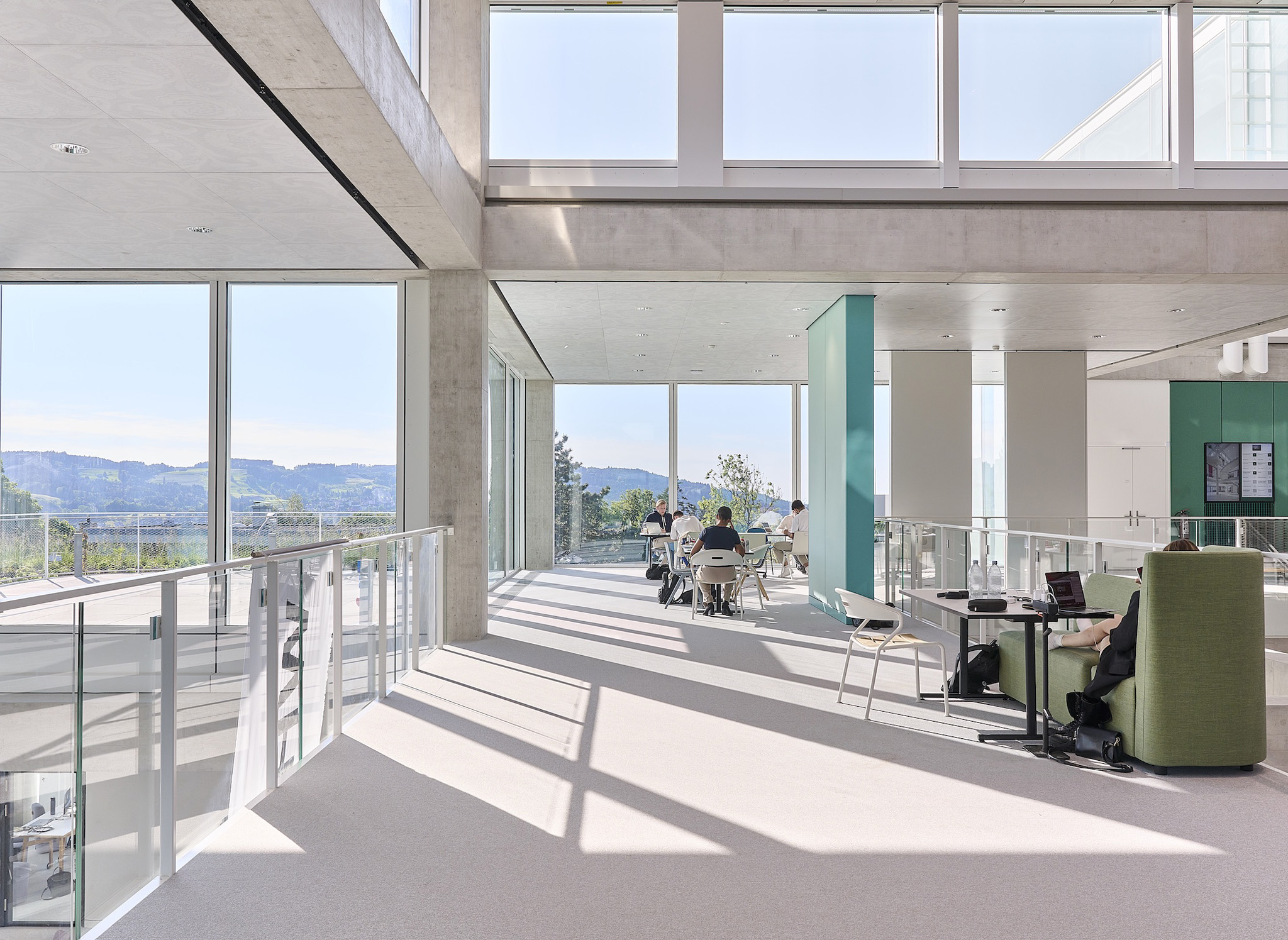
Learning Center for the University of Saint-Gall by Sou Fujimoto. Photograph by Gataric-Fotografie.
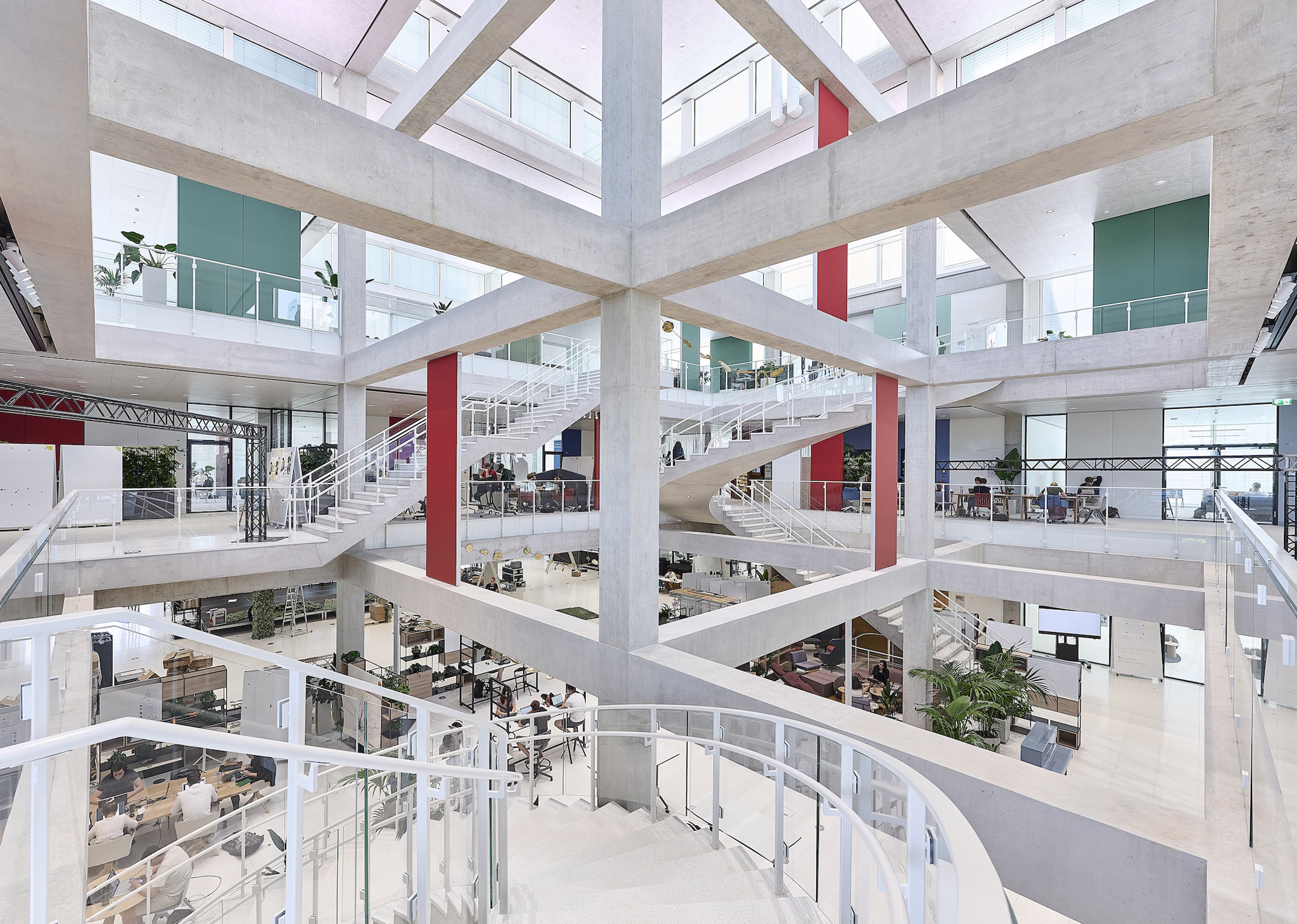
Learning Center for the University of Saint-Gall by Sou Fujimoto. Photograph by Gataric-Fotografie.
Project description by Sou Fujimoto
The building designed by Sou Fujimoto for the University of St.Gallen (HSG) is based on the concept of creating spaces that facilitate innovative types of learning and interaction with students, teachers, the surrounding nature and the neighbourhood. The name SQUARE refers to the public square in front of the building, where the focus is on meeting and exchanging. The grid of the building structure, with dimensions of 10 by 10 meters, also draws on the shape of the square.
The spatiality of the building unfolds vertically with 4 floors and 92 terraced cubes, which take the contour lines of the St. Gallen landscape as a reference and allow SQUARE to enter in dialogue with its environment.
The cubes offer a total of 7,000 square meters of floor space, rooftop terraces are planted with greenery, and indoor and outdoor spaces are related to transparent surfaces. Internally, the structure is designed so that the layout of the rooms can be changed repeatedly: transparency and flexibility are at the core of the vision of the St Gallen University and HSG foundations, creating a highly functional learning centre which allows for sustained use over its lifespan.
The spatial units are intended to fuel the different aspects of learning: communication, concentration, collaboration, and interaction. Through this objective, the structural design is intended to provide maximum flexibility and shape new ways of teaching and learning for today and tomorrow.
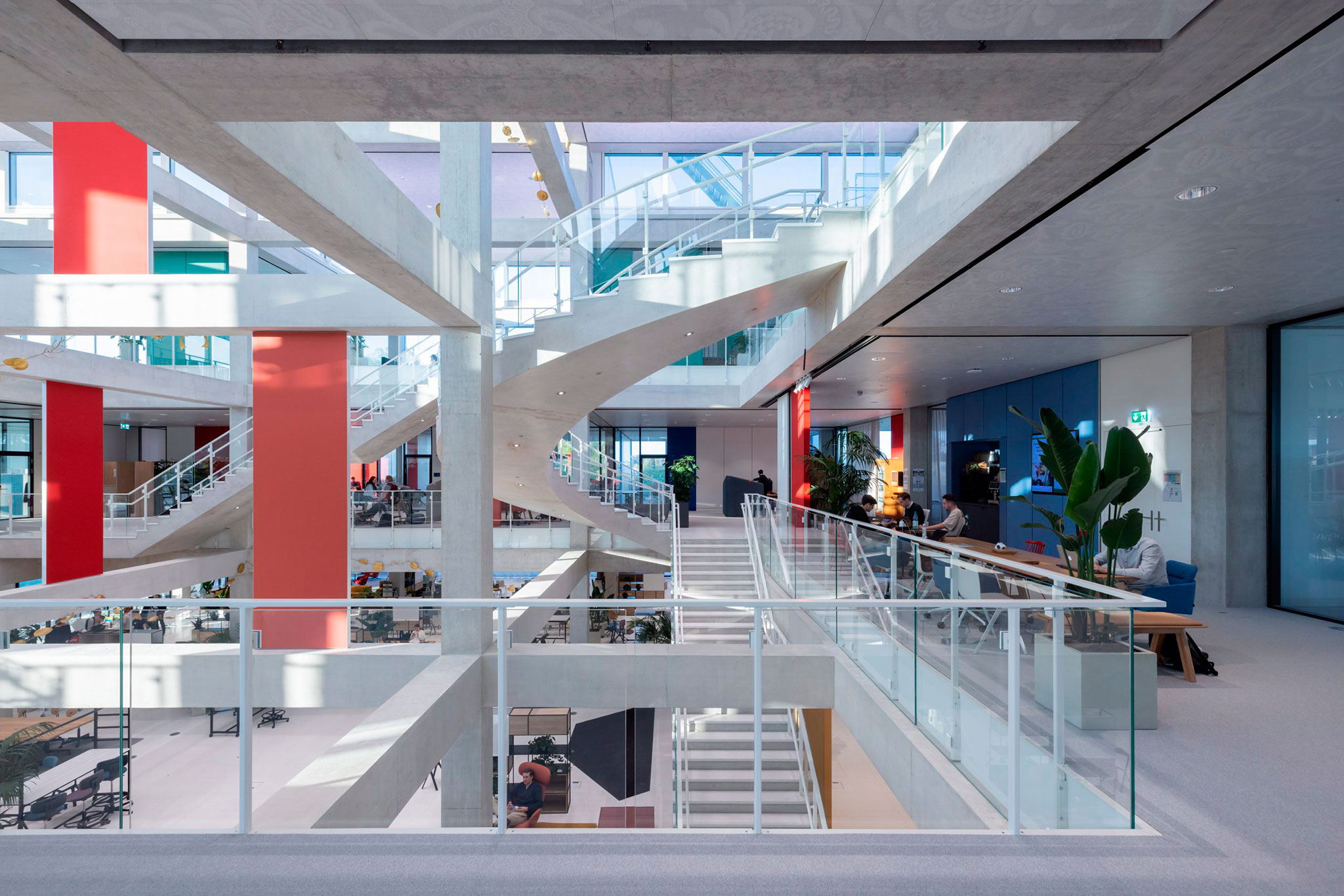
Learning Center for the University of Saint-Gall by Sou Fujimoto. Photograph by Iwan Baan.
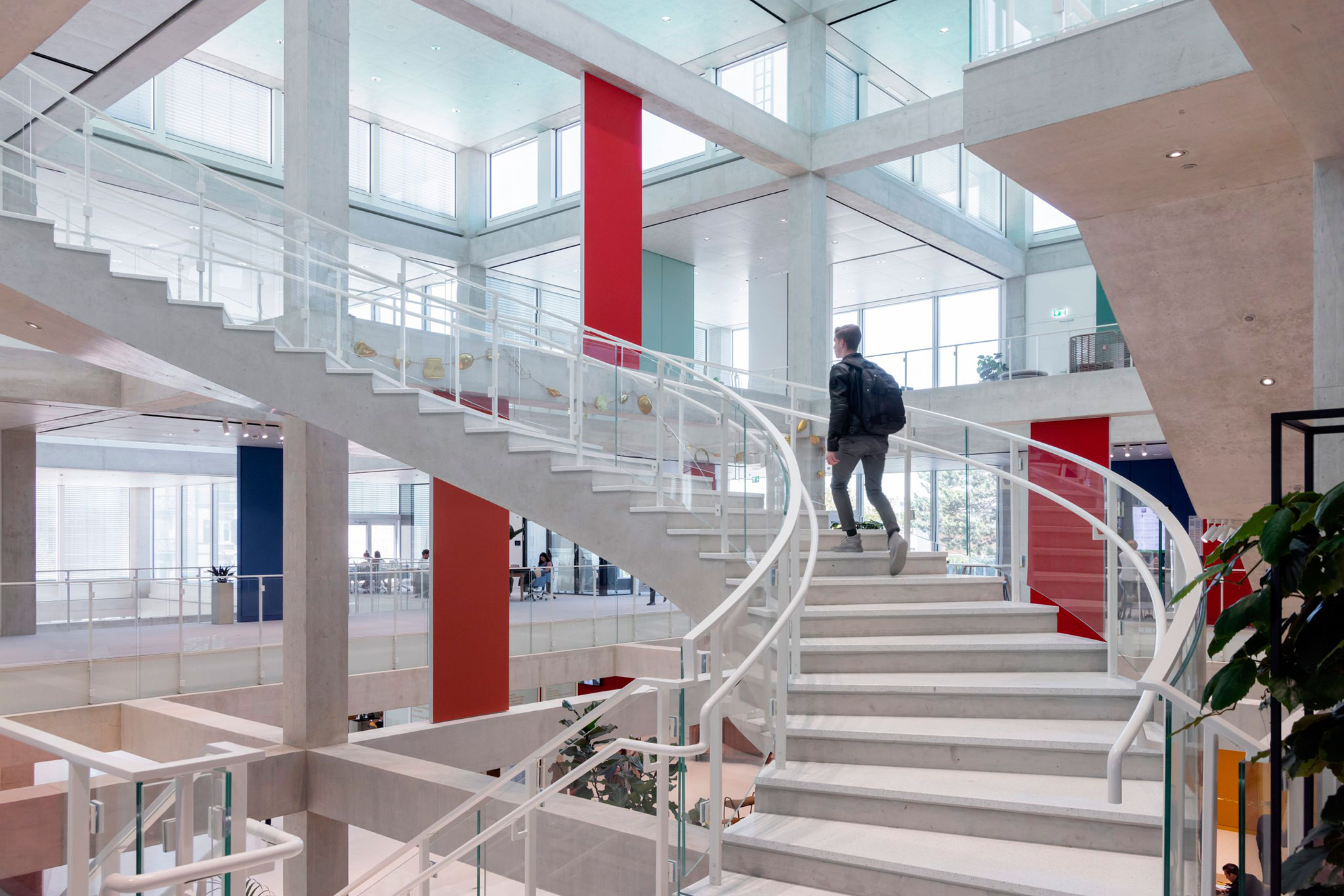
Learning Center for the University of Saint-Gall by Sou Fujimoto. Photograph by Iwan Baan.
Four pillars give shape to the project that breaks the traditional image of the master teacher as a source of all wisdom, by symbolically and physically releasing ourselves from the classic classroom typology:
- The Cloister, is a continuous path of learning, creating both opportunities for dialogue and retreat simultaneously.
- The Forum is a unique space that hosts large open functions of the New Learning Center and the St Gallen University. This large and tall space represents the symbol of a classical forum in which discussions take place.
- Nature is integrated into the learning environment, freeing the act of studying from an interior physical boundary. Learning happens anywhere, including the exterior spaces… this architecture opens to the sun, fresh air, birds, and anything that the outside world can offer to inspire.
- Transparency. A space with no hiding, no hierarchy, everything is easy to see, to find and easy to reach.
These elements strongly resonate within the project and create a unique space where students and university members can freely interact and connect with the world beyond.
A structural challenge
The construction includes two terraced upper floors, a ground floor and a basement. It is characterized by a floor-to-ceiling window front drawing the axial grid, which provides interaction with the landscape. The square floor plans allow for a variety of different learning environments to be reimagined. At the centre of the building is the atrium, which extends over three floors and provides a special, inspiring atmosphere of encounter through the incidence of natural light.
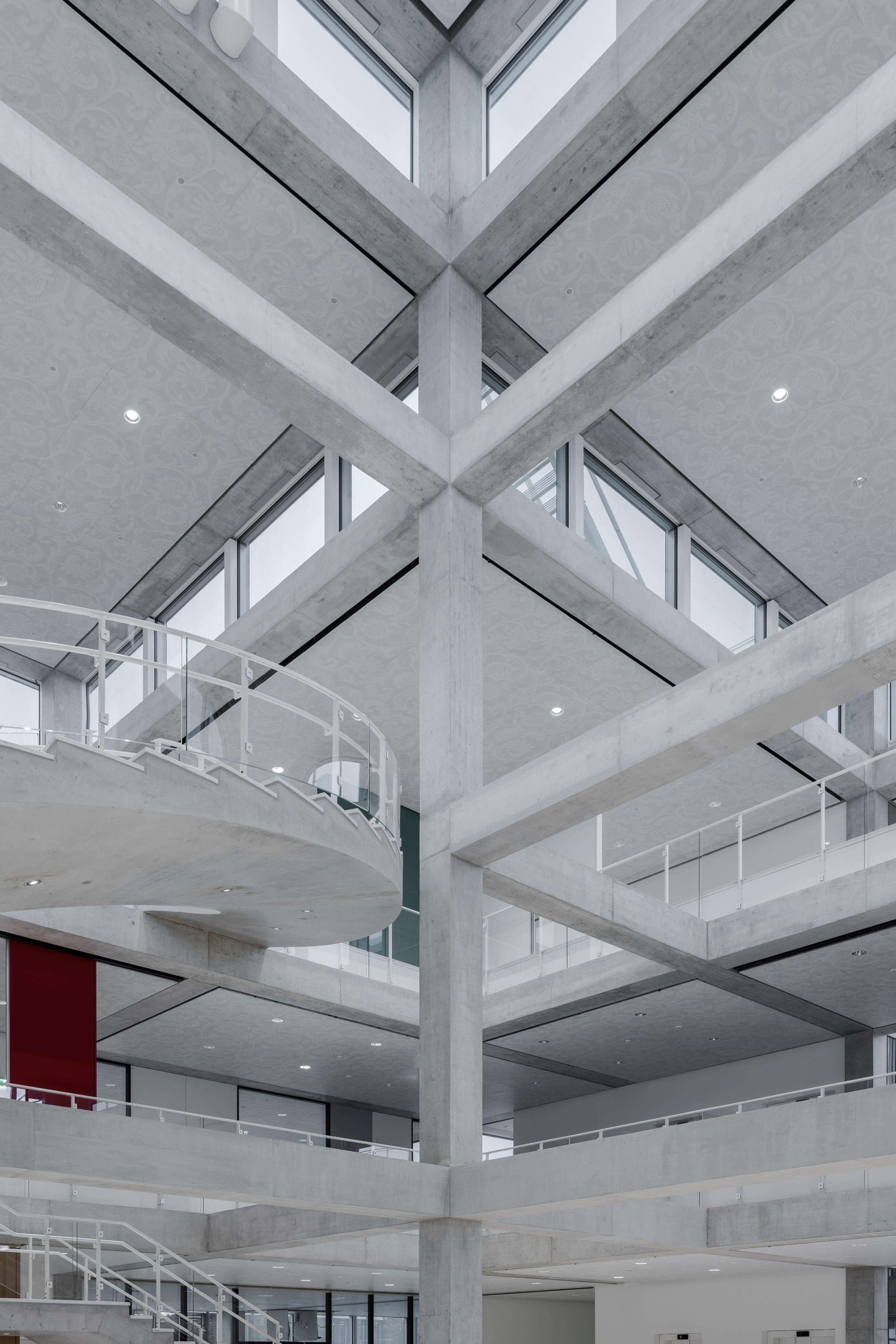
Learning Center for the University of Saint-Gall by Sou Fujimoto. Photograph by Maris Mezulis.
The reinforced concrete structure, which is designed in exposed concrete in visible areas, spans a grid of 10 meters x 10 meters x 5 meters. With its cubic concept, the building is also staggered in height and condensed towards the top. Through the columns and beams, the atriums emphasize the intended "open grid" in the interior and allow a visual view between the floors. A special challenge was the realization of the crosswise visible connections between the columns and post-tensioned beams and slabs. To lighten the colour of the exposed concrete, 60% white cement was added.
The 10-meter spanned slabs are designed as joist slabs with a slab thickness of 35 cm. An ecologically effective technology was used, which reduces the emission of environmentally toxic pollutants by up to 20 per cent and the primary energy demand by up to 22 per cent. The hollow core slabs reduce the slab mass in the layout by 20 per cent. With the savings in concrete mass, the building's seismic performance is sustainably benefited, and a more economical foundation is achieved.
The clear and visible structural concept with its primary elements - column, beam, ceiling - makes the load-bearing effect of the spatial concept legible to visitors and students. The apparently comprehensible structure does not yet reveal all its secrets to visitors, such as that of the free-floating spiral staircase that follows the load and connects the projecting floors in the atrium. It is equipped with internal torsion prestressing, which, in addition to holding and supporting, improves rigidity, making the vibrations appear at a comfortable level. The free stairs in the atrium enliven the sense of space and make walking through the SQUARE a lasting experience.
The result is an open, non-hierarchical, and transparent space, one where everyone may find what they need and grow to become themselves.






























































